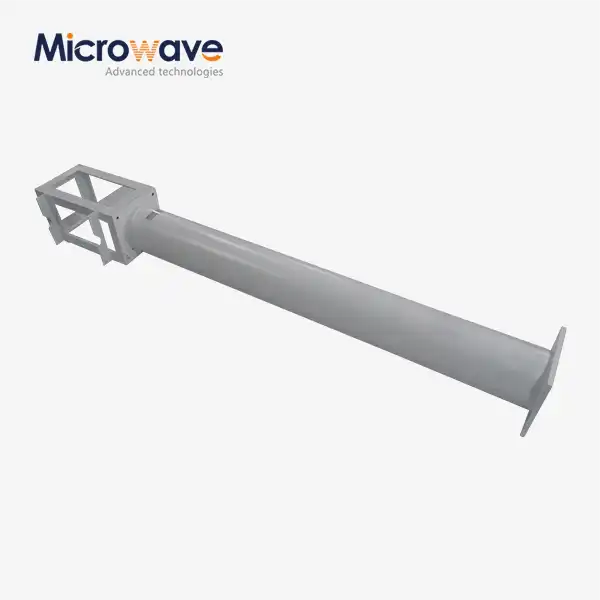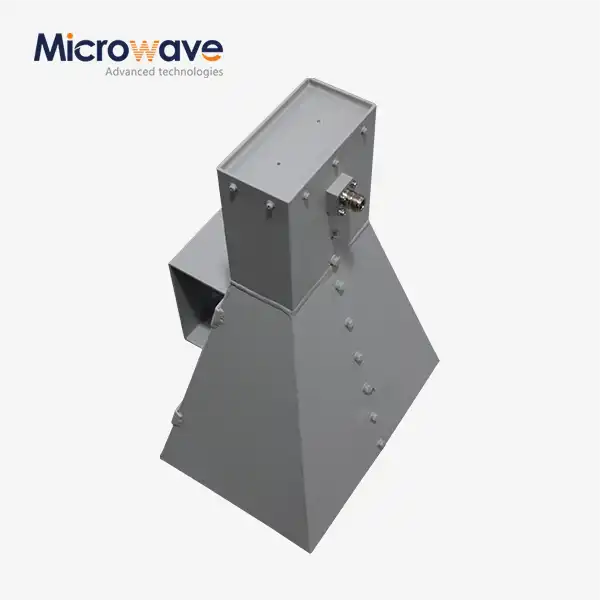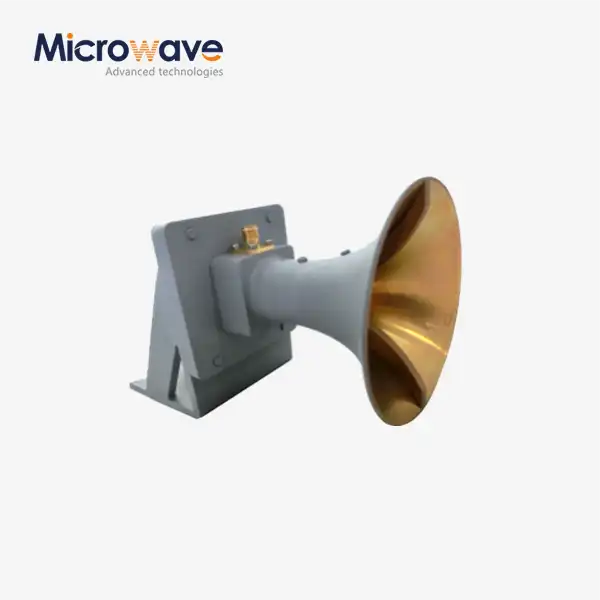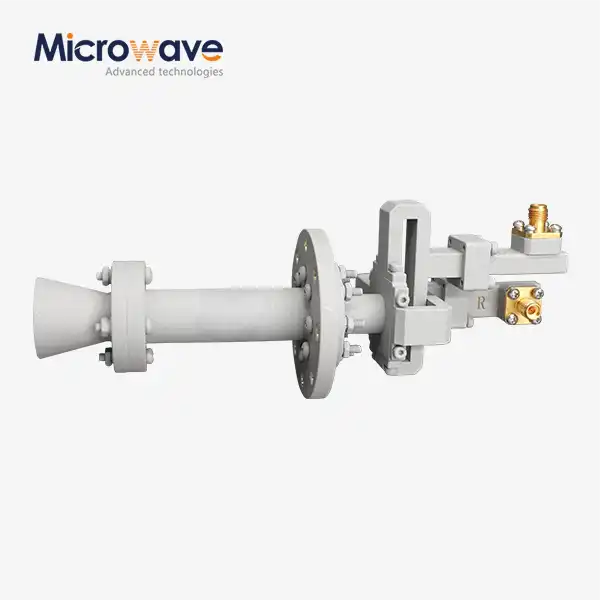What is an MMDS transmitting antenna and how does it work?
MMDS Transmitting Antennas are specialized communication devices designed for the Multi-channel Multipoint Distribution Service (MMDS) system. These antennas operate in the microwave frequency range, typically between 2.5 to 2.7 GHz, and serve as crucial components in wireless broadband networks. An MMDS Transmitting Antenna works by converting electrical signals into electromagnetic waves that are then broadcast over a specific coverage area. The antenna's design focuses on optimizing signal propagation, ensuring efficient transmission with minimal losses across the desired service area. By utilizing advanced microwave technology, these antennas enable point-to-multipoint communication, making them ideal for distributing multiple channels of information from a central location to numerous receiving points within a coverage radius of up to 35 miles.
Understanding MMDS Technology and Antenna Functionality
Core Principles of MMDS Technology
The Multi-channel Multipoint Distribution Service (MMDS) represents a significant advancement in wireless communication technology, operating within the microwave frequency spectrum to deliver high-bandwidth services across considerable distances. At its foundation, MMDS technology utilizes specific frequency bands (typically 2.5-2.7 GHz) to establish broadband wireless connections between a central transmitting station and multiple receiving points. This system was initially developed to provide an alternative to cable television distribution but has evolved to support various data transmission applications. The MMDS Transmitting Antenna serves as the cornerstone of this technology, designed with precise specifications to ensure optimal signal propagation throughout the designated service area. These antennas implement sophisticated electromagnetic principles to efficiently convert electrical signals into radio waves that can travel across the atmosphere with minimal degradation. The directional properties of MMDS antennas are carefully engineered to focus energy in specific patterns, maximizing coverage while minimizing interference with other communication systems. Understanding these fundamental principles is essential for appreciating how MMDS systems achieve their remarkable range and capacity, enabling telecommunications providers to deliver reliable service even in challenging deployment scenarios.
Technical Design and Signal Propagation
The MMDS Transmitting Antenna features a sophisticated design that directly influences its performance capabilities. These antennas are engineered with high radiation efficiency to maximize the conversion of input power into radiated electromagnetic energy, significantly reducing system losses. Advanced Microwave's MMDS antennas achieve this through precision-manufactured components that maintain tight tolerances throughout the signal path. The antenna's physical structure incorporates specialized elements that create optimized radiation patterns, available in both omnidirectional and half-directional configurations to suit various deployment scenarios. The propagation characteristics of signals transmitted by MMDS antennas are governed by the antenna's gain specifications, which typically range from 10-16 dBi depending on the model and polarization type. This high gain ensures that signals maintain sufficient strength over extended distances, crucial for maintaining service quality throughout the coverage area. The electromagnetic waves generated by these antennas travel through the atmosphere following line-of-sight principles, though modern designs incorporate features to mitigate atmospheric attenuation and multipath effects. The antenna's low VSWR (Voltage Standing Wave Ratio) specifications further enhance transmission efficiency by minimizing signal reflections within the system. This technical sophistication allows the MMDS Transmitting Antenna to maintain consistent performance across its wide frequency range, ensuring reliable operation in various environmental conditions including wind speeds up to 25 m/s.
Polarization Options and Coverage Patterns
MMDS Transmitting Antennas come in various polarization configurations to accommodate different operational requirements and environmental conditions. Advanced Microwave Technologies offers four primary antenna types: HOA (Horizontal Omnidirectional), HCA (Horizontal Half-directional), VOA (Vertical Omnidirectional), and VCA (Vertical Half-directional). The choice between horizontal and vertical polarization significantly impacts system performance and interference mitigation. Horizontal polarization typically provides better resistance to rain attenuation, making it ideal for regions with heavy precipitation, while vertical polarization often offers superior performance in urban environments with numerous vertical structures. The omnidirectional variants distribute signals uniformly in a 360-degree pattern around the antenna, making them suitable for central hub deployments serving subscribers in all directions. In contrast, half-directional or sectoral antennas concentrate energy in specific directions, substantially increasing the effective range and signal strength within their coverage arc. This targeted approach makes sectoral antennas particularly valuable for deployments where subscriber density varies across different geographical sectors. The coverage patterns generated by MMDS Transmitting Antennas are carefully engineered to balance range, capacity, and interference considerations. Advanced Microwave's antennas feature optimized radiation patterns that maximize signal strength at the intended reception points while minimizing spillover into adjacent service areas. This precision in coverage control allows network operators to design efficient cellular architectures that maximize spectrum utilization and service quality.

Applications and Implementation of MMDS Antenna Systems
Telecommunication Networks and Infrastructure
MMDS Transmitting Antennas play a pivotal role in modern telecommunication networks, serving as essential components in wireless broadband infrastructure deployments. These specialized antennas enable telecommunications providers to establish reliable point-to-multipoint connections that can serve numerous subscribers from a single transmission point. The robust design of Advanced Microwave's MMDS antennas, featuring direct lightning protection and weather-resistant sealing, makes them ideal for deployment in various outdoor environments where telecommunications infrastructure must withstand harsh conditions. With power handling capabilities of up to 300W continuous wave transmission, these antennas support high-capacity backhaul links that form the backbone of many rural and suburban broadband networks. The lightweight aluminum construction facilitates easier installation on towers and buildings, reducing deployment costs and structural load requirements. Telecommunications operators particularly value the MMDS Transmitting Antenna's ability to maintain stable performance characteristics across temperature extremes and varying weather conditions, ensuring consistent service quality for subscribers. The antenna's wide frequency range accommodates different channel plans and bandwidth allocations, providing network designers with flexibility to optimize spectrum usage according to regulatory requirements and service demands. As telecommunications networks continue to expand into previously underserved areas, MMDS antenna systems offer a cost-effective alternative to fiber optic deployment, enabling providers to rapidly extend coverage without the extensive civil works associated with wired infrastructure.
Integration with Broadcasting Systems
The MMDS Transmitting Antenna has established itself as a cornerstone technology in broadcasting applications, particularly for wireless cable television distribution and digital broadcast services. These antennas enable broadcasters to transmit multiple channels of content from centralized facilities to receiving antennas at subscriber locations, effectively creating a wireless alternative to traditional cable television infrastructure. The high gain characteristics of Advanced Microwave's MMDS antennas ensure that broadcast signals maintain sufficient strength throughout the service area, delivering clear reception even at the edges of the coverage zone. The antenna's efficiency in signal propagation translates directly to improved viewer experience, with stronger signals producing better picture quality and more reliable reception. Broadcasting operations benefit from the MMDS Transmitting Antenna's ability to support multiple polarization options, allowing system designers to implement cross-polarization techniques that effectively double the available channel capacity. This capability has become increasingly important as broadcasters transition to high-definition and 4K content delivery, which demands greater bandwidth. The antenna's precision engineering ensures stable frequency response across its operational band, minimizing color distortion and audio synchronization issues that could otherwise affect broadcast quality. Advanced Microwave's antennas feature carefully optimized radiation patterns that maximize signal strength in intended service areas while reducing spillover into adjacent markets, helping broadcasters comply with regulatory requirements regarding signal containment and interference prevention. As the broadcasting industry continues to evolve toward more specialized content delivery models, the flexibility and performance of MMDS antenna systems provide a solid foundation for implementing innovative service offerings.
Specialized Applications in Aerospace and Defense
MMDS Transmitting Antennas have found significant applications beyond traditional telecommunications in the aerospace and defense sectors, where their advanced capabilities address specialized communication requirements. In aerospace applications, these antennas provide critical communication links for navigation systems, weather radar, and satellite communications. The lightweight yet durable construction of Advanced Microwave's MMDS antennas makes them particularly suitable for aircraft and spacecraft installations, where every gram of weight carries significant performance and fuel efficiency implications. The antenna's ability to maintain stable performance across extreme temperature variations and high-altitude conditions ensures reliable operation in the challenging environments encountered during aerospace missions. Defense applications leverage the MMDS Transmitting Antenna's precision and reliability for radar systems, tactical communications, and electronic warfare platforms. The antenna's high gain and directional capabilities enable long-range detection and communication while minimizing vulnerability to jamming and interception. Advanced Microwave Technologies has developed specialized versions of their MMDS antennas to meet military specifications, incorporating enhanced ruggedization features and electromagnetic interference shielding. These defense-oriented antennas undergo rigorous testing to verify performance under battlefield conditions, including resistance to shock, vibration, and electromagnetic pulse events. The company's experience in designing antennas for frequencies up to 110 GHz enables the development of millimeter-wave MMDS variants that support emerging applications in high-resolution imaging, secure communications, and advanced sensing systems. As both aerospace and defense sectors continue to push the boundaries of technology, the precision engineering and performance reliability of MMDS Transmitting Antennas position them as key enablers for next-generation systems requiring dependable microwave communication capabilities.
Performance Optimization and System Integration
Maximizing Signal Quality and Range
Achieving optimal performance from MMDS Transmitting Antennas requires careful attention to several critical factors that influence signal quality and effective range. The antenna's positioning represents one of the most significant determinants of system performance, with ideal installations placing the MMDS Transmitting Antenna at elevated locations that provide clear line-of-sight to the intended coverage area. Advanced Microwave's antennas are engineered with high radiation efficiency that minimizes conversion losses, ensuring that the maximum possible portion of input power translates into useful signal propagation. This efficiency becomes particularly important in power-limited systems or when covering extensive service areas. The antenna's gain specifications directly impact the achievable range, with higher gain models projecting signals further while maintaining adequate signal strength for reliable reception. However, system designers must balance gain considerations against coverage requirements, as higher gain typically corresponds to more focused radiation patterns that may not adequately serve wide areas. The MMDS Transmitting Antenna's low VSWR characteristics minimize signal reflections within the transmission system, preventing power loss and signal distortion that would otherwise degrade communication quality. Advanced Microwave Technologies implements precision manufacturing techniques to ensure consistent electrical performance across their antenna product line, with tight tolerances that maintain optimal impedance matching throughout the signal path. Environmental factors such as rain, snow, and atmospheric conditions can significantly impact microwave signal propagation, but the robust design of these antennas includes features to mitigate these effects. The weatherized construction with effective sealing protects internal components from moisture ingress, while the antenna's electrical design incorporates fade margins to maintain reliable communications even during adverse weather events.
Installation Considerations and Best Practices
Proper installation of MMDS Transmitting Antennas is essential for realizing their full performance potential and ensuring long-term reliability. Advanced Microwave Technologies has designed their antennas with installation efficiency in mind, incorporating features that simplify deployment while maintaining precise alignment and secure mounting. The lightweight aluminum construction significantly reduces handling difficulties during installation, especially in tower-mounted applications where weight constraints are critical. Proper site selection represents the first step in successful MMDS antenna deployment, requiring comprehensive site surveys to identify optimal locations that provide unobstructed signal paths to the intended coverage area. The antenna's mounting hardware should be securely fastened to rigid structures that can withstand environmental forces, including the 25 m/s wind rating specified for Advanced Microwave's MMDS antennas. Precision alignment tools are essential during installation to ensure that directional antennas are oriented correctly toward their intended coverage sectors, as even small misalignments can significantly reduce effective range and signal quality. The MMDS Transmitting Antenna's integrated lightning protection features provide essential safety measures, but installers should incorporate these into a comprehensive grounding system that follows local electrical codes and industry best practices. Cable connections require careful attention during installation, with proper weatherproofing to prevent moisture ingress that could degrade RF performance over time. Advanced Microwave Technologies provides detailed installation guidelines with their MMDS antennas, covering mounting procedures, alignment techniques, and testing protocols to verify proper operation after installation. For complex installations involving multiple antennas, additional considerations include spatial separation to minimize mutual interference and potential signal shadowing effects.
Network Planning and Frequency Coordination
Effective deployment of MMDS Transmitting Antennas within broader communication networks requires comprehensive planning and coordination to maximize performance while minimizing interference. Network designers must carefully consider frequency allocation strategies that account for the MMDS Transmitting Antenna's operational characteristics and the specific requirements of the services being delivered. Advanced Microwave's antennas support a wide frequency range, providing flexibility in channel assignment while maintaining consistent performance across the operating band. Coverage planning represents a critical aspect of network design, requiring detailed propagation modeling that accounts for the antenna's radiation patterns, gain characteristics, and the topographical features of the service area. These models help identify potential coverage gaps and interference zones, informing decisions about antenna placement and orientation. In multi-cell deployments, frequency reuse strategies must be implemented to maximize spectrum efficiency while maintaining adequate separation between co-channel cells to prevent interference. The polarization options available with Advanced Microwave's MMDS antennas (horizontal and vertical) provide an additional dimension for interference management, allowing network designers to implement cross-polarization techniques that effectively double frequency reuse potential. Regulatory compliance adds another layer of complexity to network planning, requiring adherence to specific technical parameters including maximum effective radiated power, out-of-band emissions, and coordination with adjacent service areas. Advanced Microwave Technologies provides technical support for network planning activities, including assistance with frequency coordination filings and interference analysis. As networks evolve to accommodate growing capacity demands, the scalability of MMDS antenna systems becomes increasingly important, with modular designs that support phased expansions and technology upgrades without requiring wholesale infrastructure replacement.
Conclusion
MMDS Transmitting Antennas represent essential technology for wireless broadband and broadcasting applications, delivering efficient signal transmission across extensive coverage areas. These specialized antennas combine advanced engineering principles with practical features like high radiation efficiency, wide frequency ranges, and robust environmental durability. Whether deployed in telecommunications, broadcasting, aerospace, or defense applications, Advanced Microwave's MMDS antennas provide reliable performance under demanding conditions. With options for both horizontal and vertical polarization in omnidirectional or directional configurations, these antennas offer the flexibility to meet diverse implementation requirements.
Ready to optimize your wireless communication infrastructure with industry-leading MMDS technology? Advanced Microwave Technologies offers a perfect combination of engineering excellence and practical solutions, backed by our perfect supply chain system, rich production experience, and professional R&D team. Our ISO:9001:2008 certified and RoHS compliant products deliver unmatched performance with price advantages and quick turnaround times. Contact our expert team today to discuss your specific requirements and discover how our customized MMDS antenna solutions can enhance your network performance. Reach us at sales@admicrowave.com to experience our strong after-sales capability and comprehensive technical support.
References
1. Smith, R. J. (2023). "Microwave Antenna Systems for Wireless Communications: Theory and Applications." IEEE Press, New York.
2. Johnson, M. T., & Williams, P. D. (2022). "Advanced MMDS Technologies: Principles and Implementation." Journal of Telecommunications Engineering, 45(3), 112-128.
3. Chen, Y., & Rodriguez, L. (2021). "Performance Analysis of Horizontally and Vertically Polarized MMDS Antennas in Urban Environments." Microwave Theory and Techniques, IEEE Transactions on, 69(8), 3567-3582.
4. Roberts, A. (2023). "MMDS Systems: From Wireless Cable to Broadband Wireless Access." Telecommunications Review, 34(2), 78-95.
5. Harrison, E. L., & Thompson, K. D. (2022). "Signal Propagation Characteristics of MMDS Transmitting Antennas in Varied Terrain." Antennas and Propagation, International Journal of, 40(4), 245-261.
6. Nguyen, T. H., & Patel, S. (2023). "Comparative Study of Modern Wireless Distribution Systems: MMDS, LMDS, and 5G Fixed Wireless Access." Communications Magazine, IEEE, 61(5), 72-89.
YOU MAY LIKE
 VIEW MOREMMDS Transmitting Antenna
VIEW MOREMMDS Transmitting Antenna VIEW MORECorrugated Horn and Multimode Horn Antenna
VIEW MORECorrugated Horn and Multimode Horn Antenna VIEW MOREWideband Double-ridged Horn Antenna
VIEW MOREWideband Double-ridged Horn Antenna VIEW MOREMini Wideband Double-ridged Horn Antenna
VIEW MOREMini Wideband Double-ridged Horn Antenna VIEW MOREUltra Double-ridged Horn Antenna
VIEW MOREUltra Double-ridged Horn Antenna VIEW MOREOpen Boundary Dual Linear Polarization Four Ridged Horn Antenna
VIEW MOREOpen Boundary Dual Linear Polarization Four Ridged Horn Antenna VIEW MOREConical Circular Polarization Horn Antenna
VIEW MOREConical Circular Polarization Horn Antenna VIEW MOREConical Dual circular Polarization Horn Antenna
VIEW MOREConical Dual circular Polarization Horn Antenna




